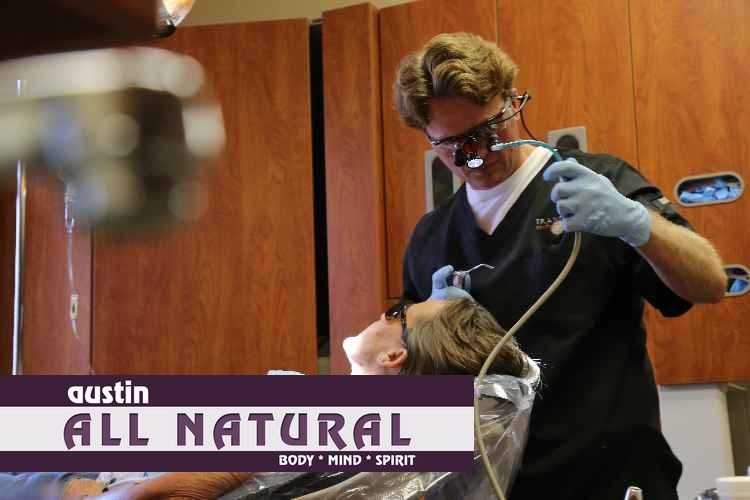History of Neural Therapy
TDH Office • Apr 30, 2020
History and Introduction
Initially developed in Germany during the early 1900’s, Neural Therapy, is beginning to re-emerge as a simple and effective treatment for chronic pain and many other types of chronic illness. The first applications of neural therapy were performed in 1925 by brothers Ferdinand and Walter Huneke. Neural therapy is not based on the treatment of nerves as the name implies but rather based on the premise that illness may result from a nervous system that has become unregulated or temporarily damaged or distracted. In actuality, neural therapy is more of a type of bio-regulatory therapy or holistic therapy who’s goal is to produce a positive response to the whole system.
For example, have you ever had the experience where you tried to turn on an appliance or lamp and it didn’t come on? There could be several reasons why, although we usually assume that the computer is broken or bulb has gone bad. Have you ever incorrectly changed the bulb only to find out that the light wasn’t working because the lamp wasn’t plugged in? Neural therapy is like making sure the lamp is plugged in. Its a therapy to make sure the correct electrical energy is flowing to the lamp, or in this case, to your heart, your brain, your muscles and every other cell and part of your body. Our body communicates through electricity. Neural therapy is a way to make sure the correct energy is going to all the important places in your body. The nerves in our bodies ultimately control everything…from blood flow to muscle movement to all aspects of digestion and healing. Its like making sure the wiring in your house is right.
Neural therapy is now gradually being adopted by medical communities throughout the world with cases demonstrating many remarkable healing outcomes. The Neural Therapy technique primarily involves the injection of local anesthetic called Procaine into scars, trigger points, tendon and ligament insertions, peripheral nerves, autonomic ganglia, and different tissues. Neural therapy is based on the belief that there is an extracellular matrix or mesh-work of fibrous tissue that connects every cell in the entire body to every other cell. It also believes the same pathways or roads in the body can lead to both illness and recovery and that with support, any illness has the potential to heal. Based on the concept of the extracellular matrix, or ECM, chronic pain and illness result from long-term disruption and irritation of this complex electrical matrix system. These disruptions can occur either structurally, biochemically or electrically.
Neural therapy uses the re-polarizing, or electrical resetting property of Procaine to re-establish a functional, healthy electrical charge around cells. This in turn allows for proper cellular and ECM functions and eventual homeostasis throughout the entire autonomic nervous system. Neural therapy is used to correct “interference fields” or disruptions of the autonomic nervous system. The location of the interference field can be in the vicinity of the patient’s actual pain, or may be in an entirely different location in the body. Or in other words, the pain is not always coming from the place where you feel the pain. The therapy outcomes range from gradual improvement after repeated treatments to an immediate complete relief of symptoms, referred to as a “lightning reaction”.
The sincere goal of finding safer ways of caring for helping my patients led me to neural therapy in 2012.
As a biologic dentist, I want to make a positive impact with regard to all areas of my patients health when I perform my dental procedures.
RECENT ARTICLES

By TDHOffice
•
07 Feb, 2019
High above the Earth, lightning cracks. There’s no one around to hear the thunder as molecules split. As they reform, no one is there to witness something new and powerful being created, a superhero with the power to fight invaders capable of wreaking havoc on life as we know it.
RECENT BLOGS
By TDH Office
•
01 May, 2020
“At Transcend Dental Health we take the time to meet and understand the individuals we serve. We provide value to our patients by using a unique combination of holistic dentistry and naturopathic medicine that honors our patient’s health goals, personal values and the delicate balance which God has designed into our amazing bodies. We assist each patient to define their unique vision for health and help them make choices that are consistent with that vision. We provide a comprehensive explanation of dental procedures, restorative materials and how they relate to total body health. We practice only safe and proven protocols. We provide our patients with facts so that they may make a truly informed consent for care.”
By TDH Office
•
30 Apr, 2020
The Glyphatic or Glial Lymphatic System and Neural Therapy One application of neural therapy I use in my office is to help “drain the brain”. It was discovered recently that our brain has its own lymphatic system, called the Glymphatic system. Basically, by pumping cerebral spinal fluid through the brains tissues, the glymphatic system flushes the waste from the brain back into the body’s circulatory system where is goes to the liver for elimination. The system ramps up its activity during sleep, thereby allowing your brain to drain toxins and harmful proteins called amyloid-beta, the build up of which has been linked to Alzheimers. It was discovered that during sleep, the cells of the brain shrink by up to 60%, allowing a greater efficiency of waste removal. Melatonin is the clearing agent for the brain. It is the hormone that stimulates the glial lymphatic system to drain. Melatonin is produced each night naturally when we sleep, but is tied closely to light exposure and our ability to have complete darkness when we are asleep. Melatonin is only produced in total darkness and any light exposure during the night stops your melatonin production which ultimately affects your ability to adequately drain harmful brain toxins at night. Orally consumed melatonin is not as effective as your own natural melatonin. I use a technique from Dr. Deitrich Klinghart where by neural therapy injections of procaine are used to stimulate the brain to drain. I use a safe anesthetic called Procaine to stimulate 10 to 12 different lymphatic areas (neck chain, tonsils, adenoids, to name a few) that result in the stimulation of the glial lymphatic system, which helps to drain toxins from the brain, ultimately reducing brain inflammation and toxicity. The entire procedure takes less than 15 minutes and is completely safe. No harmful chemicals are used. The process is designed to trigger and stimulate your bodies natural channels for drainage, so it happens at your bodies pace. I have seen it be helpful with patients that have had long term brain inflammation related to metal poisoning, chronic infection and insomnia. Sometimes we employ binders like chlorella or charcoals/clays if we think there is potential to drop heavy-metal toxic loads from the brain. Ideally we recommend to have vitamin C therapy in conjunction with the protocol we have affectionately named “Clean the Head” as it boosts your healing for a short time. We have seen tremendous results with the patients we have treated with this protocol. Most people experience immediate improved mental acuity and less brain fog. With repeated exposures we have seen improved psychological attitude and improved emotional well-being as a result of reducing the toxic load on the brain.
By TDH Office
•
30 Apr, 2020
Neural therapy is a traditional German therapy, which uses Novocain to treat the autonomic nervous system (ANS) neural therapy is a traditional German therapy, which uses Novacaine to treat the autonomic nervous system (ANS). Local anesthetics strategically placed into scars, under the skin of chronically dysfunctional organs/structures and into areas of ANS nerve cell nuclei (Ganglia) are the basic tools to the traditional Neural therapists Neural therapy is the primary therapeutic modality for treating chronic pain in Germany. The therapeutic agents of neural therapy directly affect the ANS Nerves which affect blood flow regulation and bodily function. And indirect treatment of the ANS is acupuncture. While there are many differences in theory and philosophy between acupuncture and neural therapy, fundamentally they both modulate or treat the same thing, namely the autonomic nervous system. Neural therapy uses it’s therapeutics directly into the ANS nerves and acupuncture it uses its system of needles in directly into reflex points which affect the ANS nerves. Both modalities are used as part of an integrated treatment strategy to rehabilitate the organs and structures of the body that have been assessed to have a functional problem and us reestablish proper bloodflow and normal cellular regulation. Both neural therapy and acupuncture are very useful in treating acute or chronic pain problems “The intelligent use of ANS will one day become the most important part of the art of healing” Von Herring 1925 Neural therapy is a system of diagnosing and treating local disturbances of the autonomic nervous system. In German and Spanish speaking countries it is considered a part of conventional medicine, even as it is virtually unknown in the English-speaking world. Central to the theory of neural therapy is the concept of the “interference field”. An interference field is a focus of electrophysioiogical instability somewhere in the body that destabilizes or blocks autonomic nervous system function – locally or systemically. Typical locations for interference fields are scars, teeth, internal orgms, autonomic ganglia, nerve roots, or any place where there is (or has been) an injury or irritation. Somatic dysfunction is a type of interference field and can be treated equally effectively by neural therapy as by manipulation. The classical neural therapy treatment is injections of dilute procaine into the interference field. Procaine acts as a membrane stabilizer, in a similar way to lidocaine in treating ventricular arrhythmias. Any medical condition that has an autonomic nervous system component may potentially be caused by an interference field. Examples include migraine, facial pain, backache and various forms of myofascial pain syndrome, as well as asthma, indigestion, bowel dysfunctioa menstrual problems, irritable bladder, etc. Interference fields have lower electrical potentials than surrounding tissues. Currents flow from areas of higher voltage to areas of lower voltage and seem to send confusing signals to the body’s nervous system. The body sometimes reacts in inappropriate ways, resulting in chronic pain and/or illness. Interference fields can be found almost anywhere in the body. Often, they are far from the part of the body where you feel symptoms. For example, an old appendix scar might cause migraine headache, or a wisdom tooth extraction scar might cause chronic low-back pain. Because these relationships are totally unpredictable, doctors need to search for interference fields everywhere in the body. Interference fields are very common and the conditions that they cause are mostly untreated in mainstream medicine except by drugs, merely suppressing symptoms. Giving a medication with a hypodermic needle has been one of the greatest advances in modern medicine and is only a little over 100 years old. If a medication is given orally a huge dose is needed to achieve the concentration necessary in the target tissue. The rest of the body is poisoned unnecessarily. Delivering a specific drug directly to the site requires a much smaller dosage. Some tissues that are disconnected from the whole, such, as in cancer, can sometimes only be reached with a needle. The needlestick also allows the stimulation of acupuncture points and the dry needling of trigger points. With a fluid-bolus scar tissue can be broken up mechanically, adhesive tissue-planes can be gently separated and normal anatomy can often be restored where there was distortion from trauma or infection. And beyond anything else, the needle stick often will bring up held back emotions and memories stored in the injected tissue. These releases are often the most important part of a healing intervention.
© 2024
All Rights Reserved | Transcend Dental Health
512-641-5717



